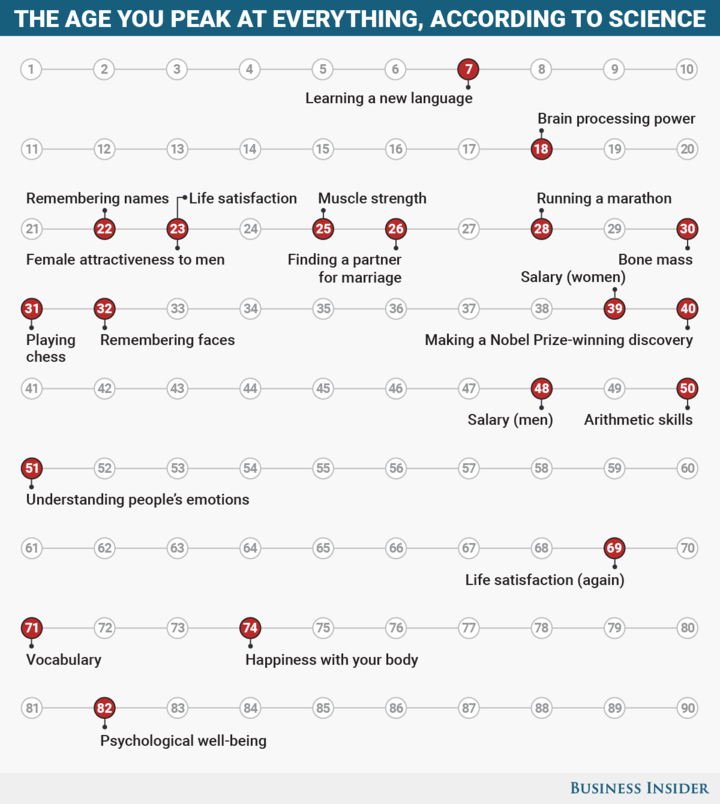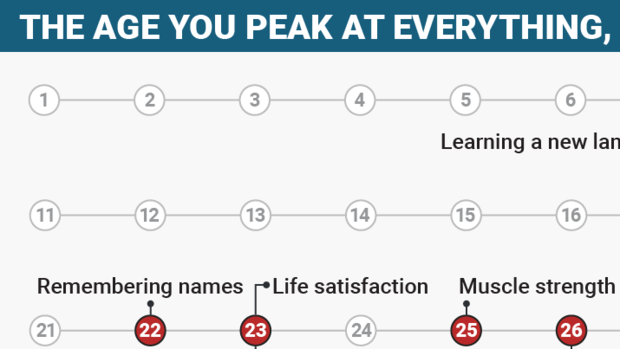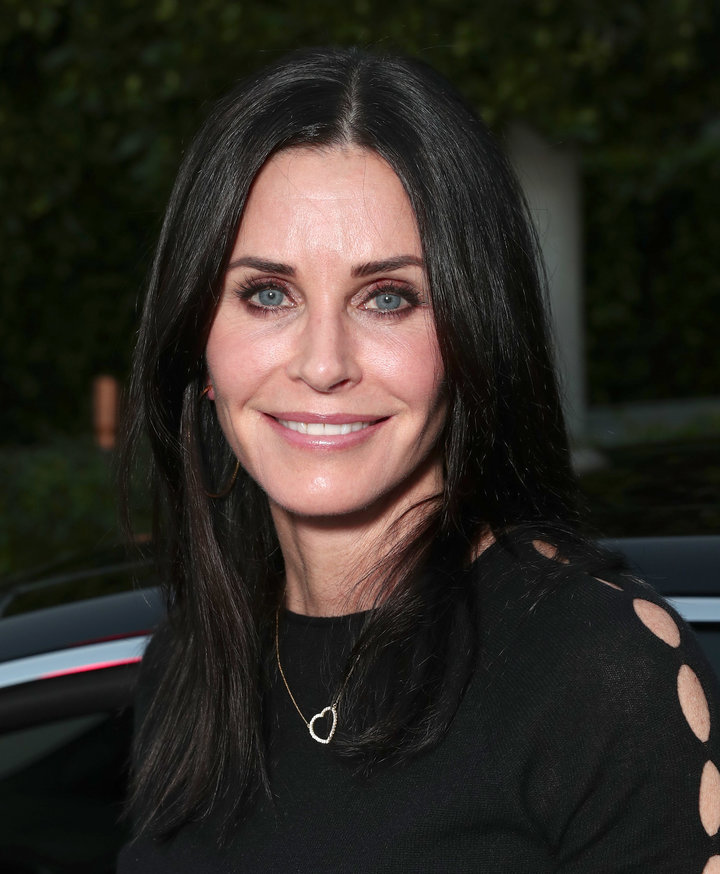At the age of 102, Mollye Marcus would be the first family member up and out of her seat to wash dishes after the holiday dinner. When she was 104 years old, she knew exactly how much money her wallet held at any given time down to the penny. And two years later, Marcus canceled her medical alert system, insisting she had no need for such a thing.
According to her granddaughter, Debbie Tynan, she stayed incredibly sharp and quick-witted for most of her life. Marcus continued to date men even as she approached 100 — and would stretch the truth about her age.
“There are so many stories about my grandmother, like how she loved to tease and had a thing for good-looking men,” said Tynan. “When the paramedics came for her after being dehydrated, she started flirting with all these young EMS guys.”
While most of us hope to merely reach 90 years old, Marcus — who died at the remarkable age of 111 — belongs to a remarkable group of outliers called supercentenarians. While centenarians have attained a century in age, supercentenarians are those individuals who live to 110 or older.
While only three reported cases occurred before 1960 worldwide, their numbers have increased since. Today, 42 living supercentenarians (41 women and 1 man) live in countries like Japan, Italy, Jamaica, and the U.S., according to the Gerontology Research Group. One estimate states that seven in 1,000 people born at the turn of the last century lived to become centenarians, while one in 100,000 lived to be 110 or older.
Why do supercentenarians like Marcus win the longevity lottery? Scientists have begun to study individuals who reach what’s called “extreme old age” to discover what makes them unique — and possibly unlock secrets of long life in the process. Studies on supercentenarians have found that they not only live longer but also age more slowly. Age-related diseases like cancer, dementia, and stroke affect them much later in life. Other studies have found particular features in their genetic profiles.
“About 25 percent of how long a given person lives is due to genetic factors, and the rest is really luck and lifestyle,” said Stuart Kim, an aging researcher formerly at Stanford University who has spent time examining the genetic differences between supercentenarians, centenarians and regular people in hopes of better understanding what makes up the 25 percent.
Kim and his colleagues have sequenced the genomes of the oldest people in the world in order to tease out the genetic factors associated with extreme longevity. In a 2014 study, they performed whole-genome sequencing on 17 supercentenarians but failed to find a significant result due to small sample size. However, when interviewing the subjects and their family members, Kim noticed that many of them — including Marcus — remained cognitively and physically functional to a high degree well into old age.
“One way that a person could live to 100 is just luck — they didn’t have cancer, heart attack, or stroke. But if I look at that person, he’s going to look 100 years old,” said Kim. “The other potential is that a person might be aging slower, and after 100 years, this person only looks 70 years old, which is also the reason why he hasn’t had cancer, stroke, etc.”
One of Kim’s supercentenarians worked as a pediatrician until the age of 103, while another drove a car at 107 years old. Also, none of the 17 had cardiovascular disease, stroke, or diabetes at the time. These anecdotal findings are consistent with other studies that have shown a delay in onset of age-related diseases, physical and cognitive function impairment, and overall morbidity. Most supercentenarians maintained independence in daily life until 100 years old, only entering a nursing home or hospital around age 105.
In his latest study, Kim and his colleagues looked at 801 centenarians and 5,406 people over 90, finding five gene variants associated with age-related diseases that occurred less frequently in this long-living population. The findings suggest these variants may influence extreme longevity and a reduced rate of aging.
So aside from winning the genetic lottery, what can the average person do to not only live longer but also healthier? Peter Martin, a gerontology researcher at Iowa State University, has studied hundreds of centenarians over the years and learned about what contributes to successful aging.
“Other than some of the obvious characteristics, such as good physical health and high cognitive functioning, we also should consider social aspects such as good social relationships and social engagement, the personality of older adults, and the rich experiences that make up an important part of an individual,” said Martin.
The successful older adults in his studies also have aspects of their personality that promote longevity. They are resilient, outgoing, highly conscientious, and don’t worry easily. Staying active both physically and mentally can contribute to well-being later in life.
Tynan remembers her grandmother being an avid reader of Danielle Steele and maintaining a love for cooking and baking. She remained social for her entire life, playing cards with friends, staying in close contact with family, and involving herself in the local community.
“Family was the most important thing to her, and her world was her two daughters and grandchildren,” said Tynan. “She was sharp, loving, and very stubborn — but that also kept her going for so long.”
Overall, human life expectancy continues to rise, but one big question remains: As time goes by, will we keep getting older as a species? In other words, is there an upper limit to human lifespan? According to molecular geneticist Jan Vijg at the Albert Einstein College of Medicine, we’ve already hit a plateau when it comes to maximum lifespan.
During a recent lab meeting, Vijg and his colleagues discussed the unique case of supercentenarian Jeanne Calment. In 1997, she died at the extreme age of 122 years old and today is still considered the oldest person who ever lived. The researchers wondered why, after two whole decades, no one had broken Calment’s record or even come very close. (The second oldest person had been 119 when she died.)
“We thought, maybe we’ve hit the end of the human lifespan,” said Vijg. “Even with all the advances in medicine and technology, maybe we can’t do anything to extend human life past this point.”
Using global demographic data, their study found evidence that suggests human lifespan may indeed have hit its natural limit. In countries with the largest number of supercentenarians — France, Japan, the U.K., and the U.S. — the maximum reported age at death significantly increased from the early 1970s until the 1990s. But after 1995, the maximum age began to drop and remains on a downward trend ever since. In fact, the average age at death of supercentenarians hasn’t changed since 1968. While some scientists vehemently oppose the idea of a longevity limit, most agree with the study’s conclusion.
“There has been an enormous increase in the number of people over 100 years old, so why does lifespan hit against this ceiling of 115? We don’t know,” he said.


























